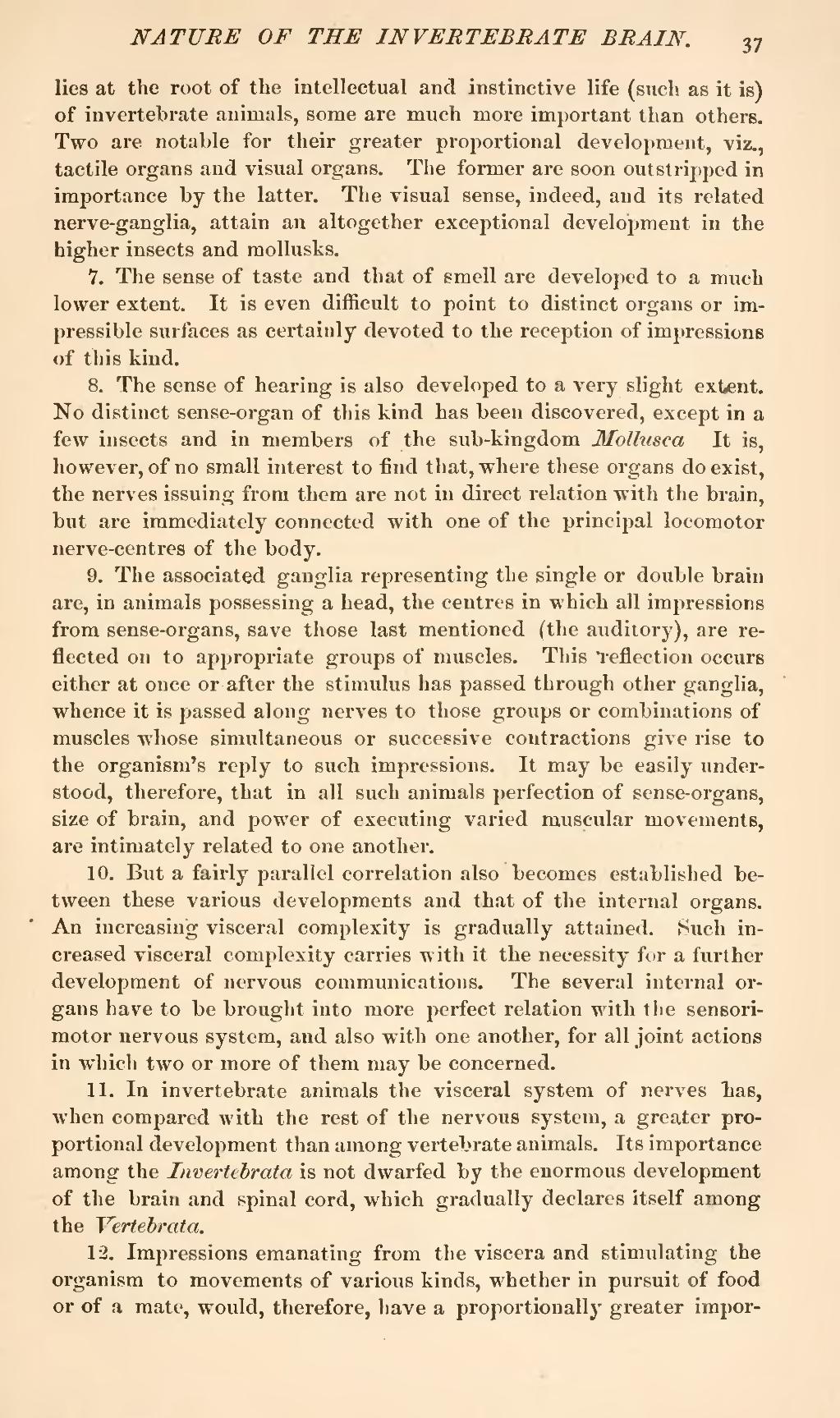lies at the root of the intellectual and instinctive life (such as it is) of invertebrate animals, some are much more important than others. Two are notable for their greater proportional development, viz., tactile organs and visual organs. The former are soon outstripped in importance by the latter. The visual sense, indeed, and its related nerve-ganglia, attain an altogether exceptional development in the higher insects and mollusks.
7. The sense of taste and that of smell are developed to a much lower extent. It is even difficult to point to distinct organs or impressible surfaces as certainly devoted to the reception of impressions of this kind.
8. The sense of hearing is also developed to a very slight extent. No distinct sense-organ of this kind has been discovered, except in a few insects and in members of the sub-kingdom Mollusca. It is, however, of no small interest to find that, where these organs do exist, the nerves issuing from them are not in direct relation with the brain, but are immediately connected with one of the principal locomotor nerve-centres of the body.
9. The associated ganglia representing the single or double brain are, in animals possessing a head, the centres in which all impressions from sense-organs, save those last mentioned (the auditory), are reflected on to appropriate groups of muscles. This "reflection occurs either at once or after the stimulus has passed through other ganglia, whence it is passed along nerves to those groups or combinations of muscles whose simultaneous or successive contractions give rise to the organism's reply to such impressions. It may be easily understood, therefore, that in all such animals perfection of sense-organs, size of brain, and power of executing varied muscular movements, are intimately related to one another.
10. But a fairly parallel correlation also becomes established between these various developments and that of the internal organs. An increasing visceral complexity is gradually attained. Such increased visceral complexity carries with it the necessity for a further development of nervous communications. The several internal organs have to be brought into more perfect relation with the sensori-motor nervous system, and also with one another, for all joint actions in which two or more of them may be concerned.
11. In invertebrate animals the visceral system of nerves has, when compared with the rest of the nervous system, a greater proportional development than among vertebrate animals. Its importance among the Invertebrata is not dwarfed by the enormous development of the brain and spinal cord, which gradually declares itself among the Vertebrata.
12. Impressions emanating from the viscera and stimulating the organism to movements of various kinds, whether in pursuit of food or of a mate, would, therefore, have a proportionally greater impor-
